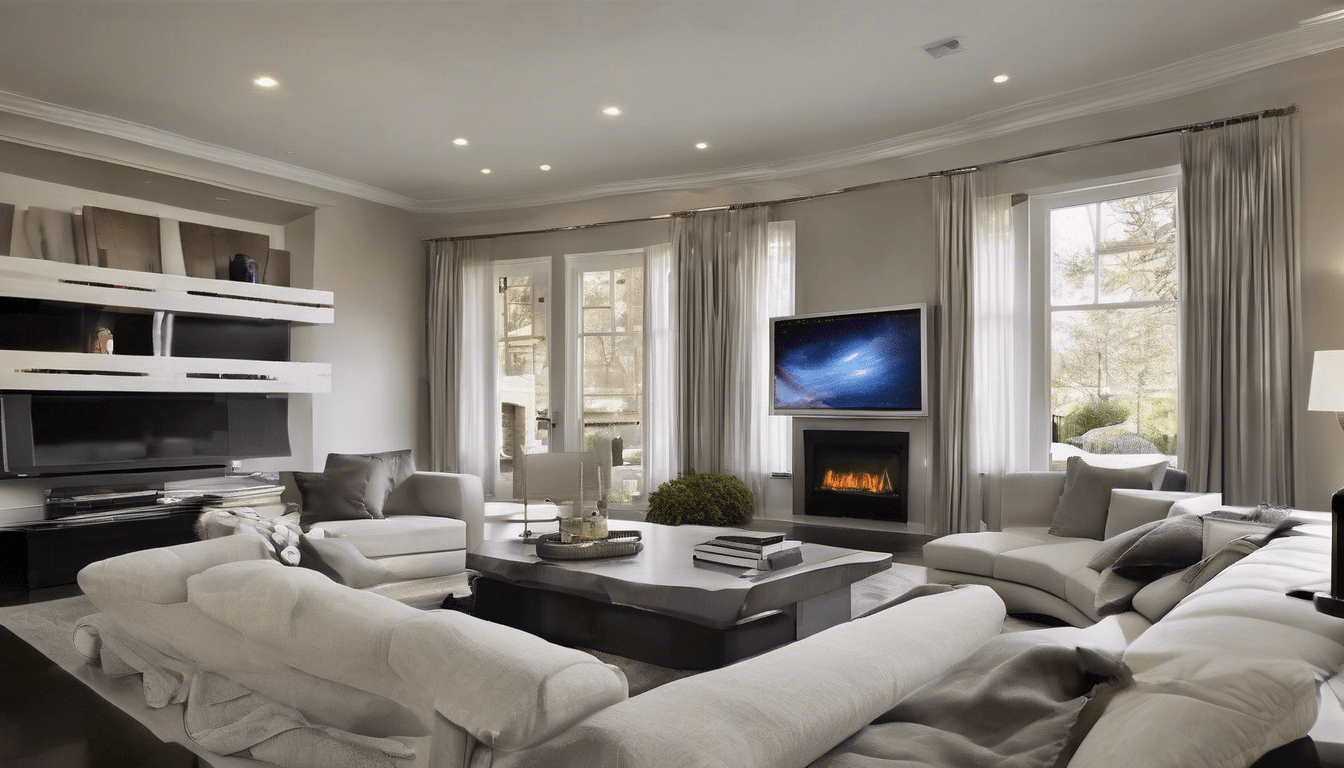Mastering Control4 installation ensures a smooth, reliable home automation experience. Proper preparation, precise hardware setup, and thoughtful software configuration can significantly enhance system performance. By understanding key steps and common pitfalls, homeowners and installers alike can achieve a seamless integration that simplifies daily life. This guide reveals expert tips to elevate your Control4 project, transforming your home into a smart, connected space with confidence and clarity.
Essential Preparations for Control4 System Installation
Before beginning a Control4 install, it is crucial to assess your home’s compatibility with the system. This includes evaluating existing network infrastructure, ensuring Wi-Fi coverage is strong, and confirming that your devices can integrate smoothly with Control4’s automation platform. Homes with outdated wiring or limited internet connectivity may require upgrades to maximize the system’s performance.
Also to discover : What are the UK’s contributions to global IoT advancements?
Creating a detailed installation plan and checklist is the next vital step. Outline every stage of the setup, from initial wiring and device placement to configuration and testing. This structured approach helps prevent oversight and facilitates troubleshooting later in the process. Include specific tasks such as positioning Control4 controllers, smart lighting components, and security devices in your plan to maintain organization throughout the install.
Gathering all necessary tools and equipment before starting the installation streamlines the workflow and avoids disruptive delays. Essential tools often include network testers, screwdrivers, wire strippers, and mounting hardware tailored for Control4 components. Having spare cables and connectors on hand can also be beneficial. Preparation not only saves time but ensures the installation adheres to best practices and safety standards.
Also read : Elevate your business security with product lifecycle management
A successful Control4 install hinges on these preparatory actions, setting the foundation for a seamless and effective smart home automation experience. For professional guidance, consider consulting resources or experts to optimize your installation process.
Step-by-step Guide to Installing Control4 Hardware
Efficient hardware installation is key to unlocking the full potential of your smart home system.
Mounting Control4 Controllers and Switches
When installing Control4 controllers and switches, proper mounting ensures device longevity and optimal functionality. Choose wall types—drywall, concrete, or brick—judiciously, using suitable anchors or screws to securely fix the hardware. For drywall, toggle bolts provide firm hold; with masonry surfaces, use plastic anchors or drilling bits designed for concrete.
Placement plays a vital role in maximizing signal reach. Controllers should be installed at central locations away from large metal objects or appliances that might cause interference. Avoid cramped or enclosed spaces that could hinder wireless performance. For switches, ensure accessibility and alignment with existing electrical outlets or junction boxes to simplify wiring.
Wiring and Power Connections
Careful attention to wiring and power setups prevents common electrical issues such as shorts or power losses. Use insulated, appropriately rated cables matched to the system specifications. Confirm that power sources deliver a stable voltage compatible with Control4 hardware requirements to avoid disruptions in operation.
Before connecting, switch off electricity at the breaker to safeguard against accidental shocks. Use a multimeter to verify no live current is running through wires destined for connection. Proper grounding is essential—ensure all grounding wires connect reliably to prevent electrical noise, enhancing system stability.
Connecting Control4 Devices to Network
Reliable network integration is fundamental for seamless smart home control. Wired connections using Ethernet cables are preferred for high-speed, low-latency communication, especially for controllers managing multiple devices. When running cables, keep them separated from power lines to minimize electromagnetic interference.
For wireless integrations, position devices to avoid overlapping Wi-Fi networks or heavy traffic from nearby electronics. Employ dual-band routers when possible and allocate dedicated frequencies to Control4 devices to reduce congestion. Regular signal testing helps identify and alleviate dead spots, ensuring consistent responsiveness.
Following these detailed steps for mounting, wiring, and network connection guarantees a stable and efficient Control4 system. For professional assistance and comprehensive setup, consider a specialized Control4 install to maximize your smart home benefits.
Setting Up and Configuring Control4 Software
Setting up Control4 software begins with installing the Composer Pro software, the platform’s core interface for programming and managing smart home devices. Composer Pro must be updated regularly to ensure compatibility with the latest devices and to access new features. Updates are straightforward, typically prompted upon launching the application, allowing users to maintain optimal performance without complex procedures.
Once installed, configuring devices and zones is crucial for intuitive control. Zones refer to different areas or rooms in a home, each potentially having multiple integrated devices like lighting, thermostats, and audio systems. Assigning devices correctly to zones ensures they can be operated individually or grouped for convenience. This setup enhances user experience, allowing simple commands like “turn off all downstairs lights” to execute flawlessly.
For broader functionality, Control4 supports integrating third-party devices such as security cameras, smart locks, and entertainment systems. The platform’s flexibility allows adding these devices seamlessly, often through pre-configured drivers available in Composer Pro. This integration capability maximizes your smart home’s potential by combining Control4’s customizability with the diverse ecosystem of smart products.
Proper configuration also involves customizing control interfaces, whether via touchscreen panels, remote controls, or mobile apps. Tailoring these controls according to user preferences further simplifies everyday smart home interactions. With Control4 software, setting up a personalized, responsive environment is both manageable and scalable, delivering a smooth smart living experience.
For detailed guidance on installation and professional setup techniques, consider consulting resources on Control4 install.
Troubleshooting Common Installation Challenges
When tackling Installation Troubleshooting, the most common hurdles often involve connectivity issues, device pairing failures, and power or wiring complications. These problems can disrupt your smart home’s functionality but are usually solvable with systematic diagnosis and correction.
Diagnosing connectivity issues and signal loss is essential because poor signal strength or interference can prevent devices from communicating smoothly. To address this, ensure devices are within range of the main hub and check for physical obstructions. Sometimes, resetting routers or moving the hub can improve signal quality. If repeated signal loss occurs, consider network congestion as a cause and optimize Wi-Fi channels accordingly.
In cases of device pairing failures, the problem typically stems from incorrect setup steps or compatibility issues. Confirm that each smart device supports the network standard (e.g., Zigbee or Z-Wave) of your central controller. Restarting both the device and hub often solves temporary glitches. Also, verify that no firmware updates are pending since outdated software can impede successful pairing.
Resolving power and wiring problems effectively demands attention to the installation environment. Verify that power outlets are stable and that all wires meet the device specifications—especially for devices requiring wired connections during a Control4 install. Loose connections or faulty wiring can cause intermittent failures, so thorough inspection and replacement of substandard cables is advised. In complex setups, using a multimeter to check voltage integrity helps rule out electrical faults.
By focusing on these core areas during installation troubleshooting, you can restore smart device reliability and improve overall system performance. For intricate wiring or power setup questions beyond basic fixes, consulting a professional experienced in a Control4 install ensures robust results and peace of mind.
Optimizing System Performance and Maintenance
Maintaining optimal system performance begins with fine-tuning device responsiveness and control accuracy. This involves calibrating sensor inputs and ensuring that devices react swiftly and precisely to commands without lag. Regular adjustments can be made through the system’s control interface or during professional monitoring to minimize delays and prevent miscommunication among connected devices.
Scheduling regular updates is crucial for both performance and security. Firmware and software updates address bugs, enhance functionality, and patch vulnerabilities. By keeping your system current, you improve its efficiency and reduce the risk of unauthorized access. Many users set automated updates or create a schedule to manually review and install patches, ensuring consistent protection.
To maintain system stability over time, consider these practical tips: keep your network clean by removing obsolete or unused devices, monitor system logs for irregular activity, and restart hubs or controllers periodically to refresh connections. These steps help prevent system slowdowns and interruptions. Also, involving a professional for your Control4 install can optimize the setup for smoother operation and prolonged reliability.
Expert Tips for a Seamless Control4 Home Automation Experience
Achieving a seamless Control4 home automation experience involves careful planning around future scalability and system upgrades. To ensure your setup adapts effortlessly as technology evolves, prioritize components that support firmware updates and integration with emerging smart devices. This strategy protects your investment and keeps your smart home responsive to new features and standards.
Centralized control is another cornerstone of the Control4 best practices. Designing a user-friendly interface that consolidates control of lights, security, entertainment, and climate into one accessible dashboard enhances convenience and user satisfaction. Intuitive navigation and customizable scenes make it easier for all household members to interact with the system naturally, reducing frustration and maximizing engagement.
For more complex environments with multiple zones or specialized requirements, utilizing professional services is invaluable. Experienced installers can conduct a detailed site assessment, identify potential interference points, and optimize device placement. Their expertise ensures robust network performance and tailored system configurations that align perfectly with your lifestyle and home layout.
If you’re considering a sophisticated setup or upgrading your existing system, consulting with professionals about your Control4 install can streamline the process, minimize errors, and hasten your transition to smart living. Knowing the right approach to Control4 best practices empowers you to build a smart home that is not only impressive today but future-ready for years to come.







